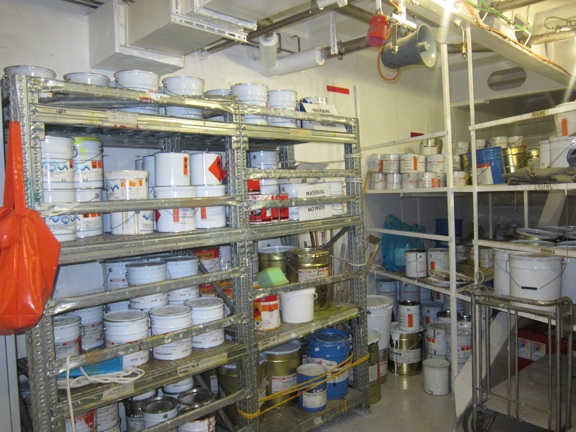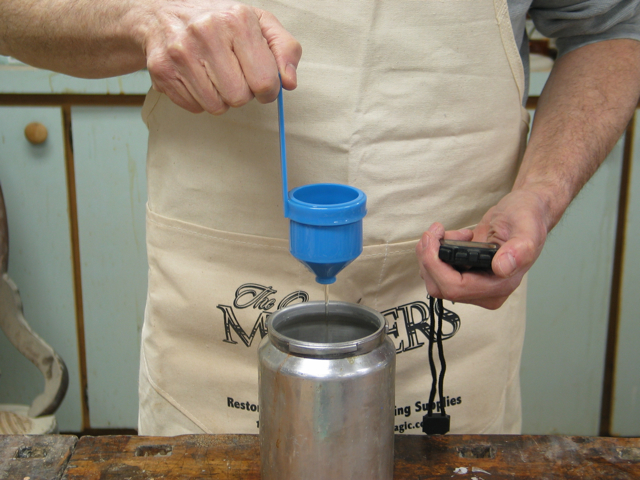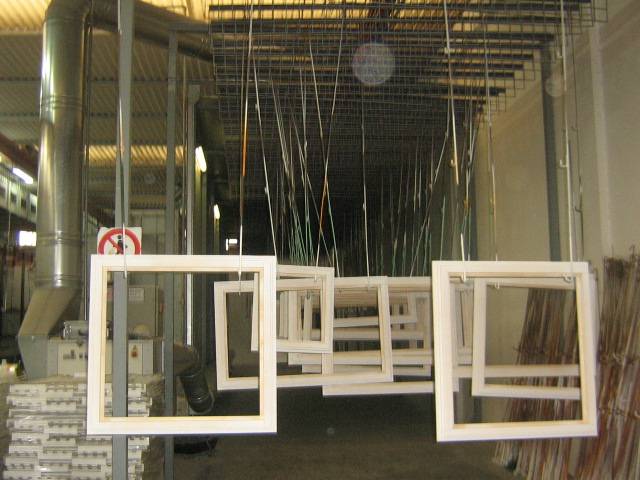The pleasant feel when touching furniture and protection against dirt is provided by the protective film generically called finish. Its quality is a combination of the quality of the products used, the correct way they are applied and the environmental factors in the area where they are applied. In large factories there are special finishing areas where temperature and humidity are controlled. This is not the case in workshops or factories that do not have such advanced facilities. In these places, problems can occur in winter when the temperature inside drops too low. And it's not just where varnishes are applied, but also where they are stored, even how they are transported. Below you will find some recommendations for the application of finishing materials in winter conditions, which also apply to DIY enthusiasts.

photo source: blog.costacrociera.it
Water-based finishing products are not allowed to freeze
In the case of water-based products it is worth remembering that they can no longer be used if they freeze. It is important that storage and transport their temperature is above 5°C. The problem is that after thawing, the appearance of the varnish in the container does not change. Defects do occur during application, however, and the film will look different from what we want. The most common defect is the appearance of stars over the entire surface of the object, as when a piece of glass is knocked from place to place and shatters without disintegrating. There is no cure for the defect, the only way to fix the problem is to remove the chipped layer and apply a new layer of product that has not been affected by the frost.
The temperature of the wood, finishing materials and environment should be close to
An important principle of finishing is that the temperature of the object to be finished, the finishing materials and the environment must be close to and not less than 15°C. Otherwise, problems may occur with the film not adhering to the wood or with defective film.
Finishing products are formulated for use in the 18-20°C range, where best results are achieved. Even if the varnish or primer is of the highest quality, if the working temperature is not respected the quality of the film can suffer. If the wooden objects and/or finishing materials are stored in places with lower temperatures, they need to be acclimatised (brought to the finishing site in advance) to reach ambient temperature.
Lower temperature means more thinner
Finishing materials have a higher viscosity at low temperatures so more solvent (water or organic thinner) will be needed to reach an acceptable viscosity for application. More solvent means less solids remaining on the surface of the wood (solid body) and automatically lower film quality. More coats will be needed to achieve the desired quality, which will increase the price of the workmanship and therefore the production cost. In addition, for solvent-based products, emission of volatile organic compounds (VOC) will be higher.

photo source: thefinishingstore.com
The moisture content of the wood should be within the recommended range
Equilibrium moisture content of wood used in furniture manufacturing should be in the range 8-12%, and for wood used outdoors (windows, windowsills, decking, etc.) between 12 and 15°C. The control must be done both on the surface and inside the wood. Regardless of the moisture content, the solid wood will shrink or expand depending on the humidity of the environment, a process accentuated by the ambient temperature. Large temperature differences between outside and inside, or even between workspaces, can accentuate movement. If the products used for finishing are very stiff, there is a risk of cracks in the varnish film. That is why, on the outside, where wood movement is more pronounced, the finishing products used are more elastic.
Film drying is influenced by the ambient temperature
Low indoor temperature will certainly be a problem when drying finishing materials as well. At lower temperatures than recommended, drying, especially deep drying, will take longer. Forcing it can be tried, but only in specially configured drying tunnels. In these tunnels the temperature rises and falls progressively and the air currents are designed so as not to damage the film.
If we force-dry finished parts by placing them in front of heat sources such as aerotherms, the film will deteriorate, bubbles, cracks, even orange peel appearance. Drying can be accelerated by using rapidly volatile thinners.
In the case of water soluble products, where the solvent is water, we can force drying by increasing air circulation in the drying area. For these products, air circulation is very important, even more important than the ambient temperature.

photo source: verniciaturapadova.it
Cold weather doesn't mean that work should stop, but it doesn't mean that work should be done anywhere and everywhere. Solutions must be found not to work in temperatures below 15°C, because the risk of finishing defects is very high. And fixing them could cost a lot more than heating the workspace.
I hope you find the above information useful. As usual, additions are welcome. And if you have any questions or queries, please leave them in the space below. I'm sure I'll reply.





























Add comment